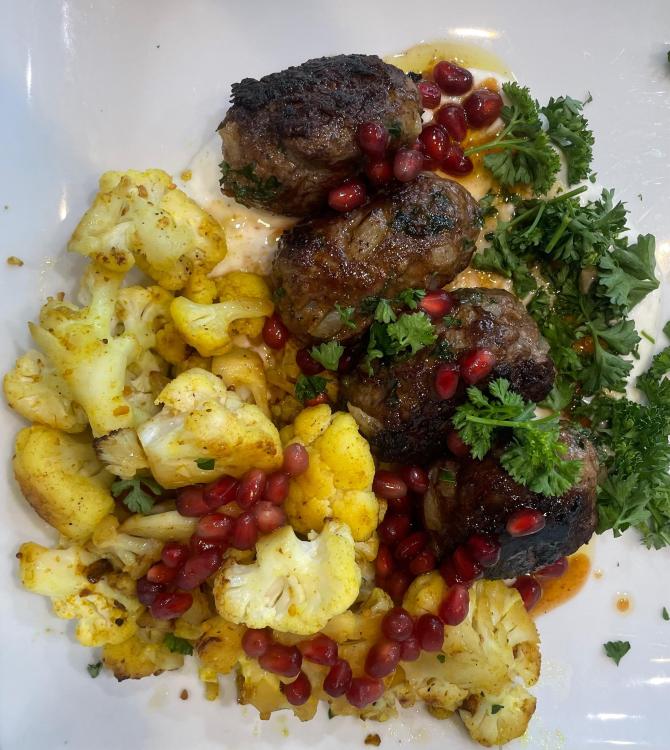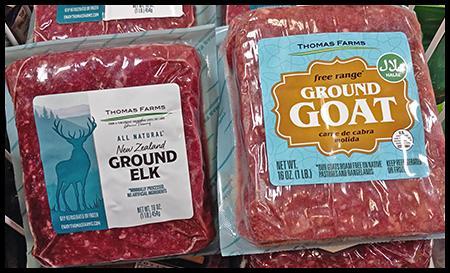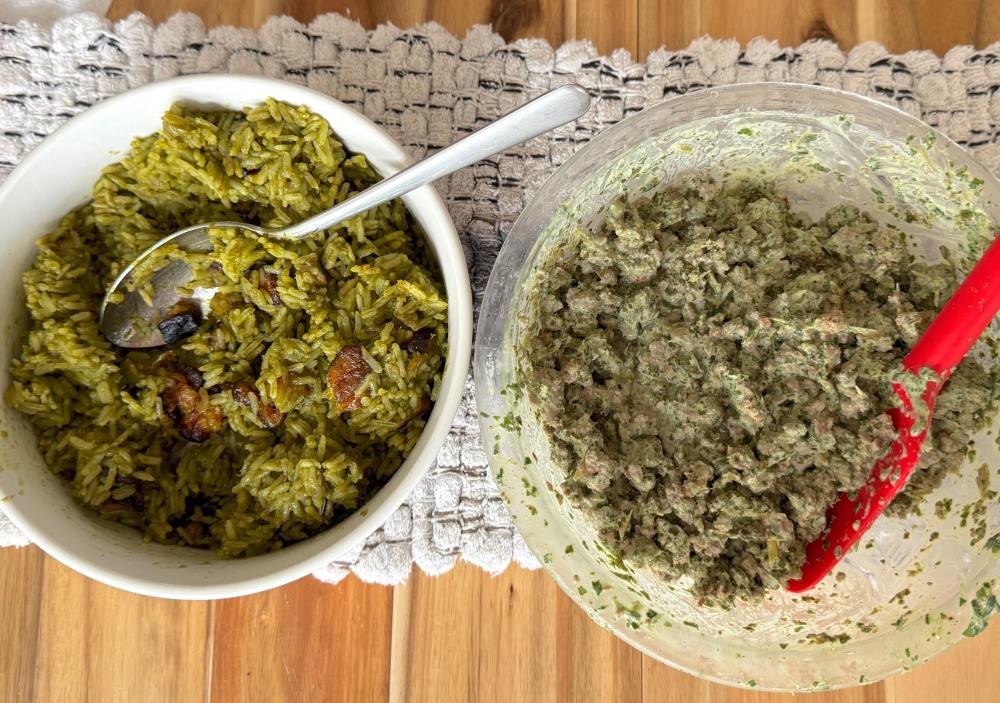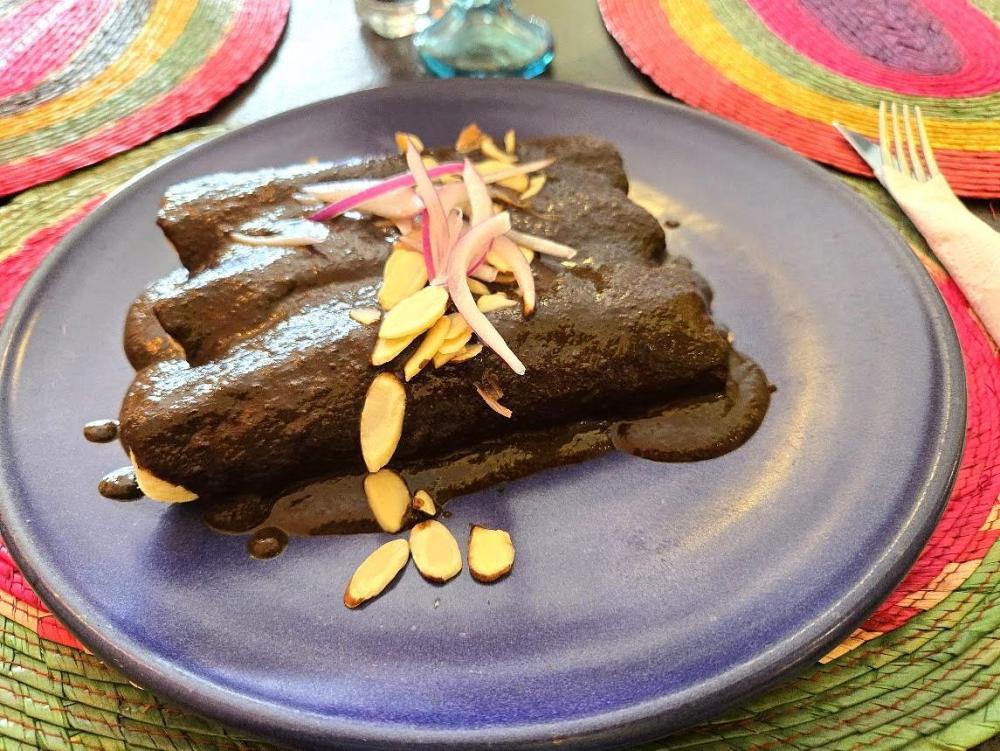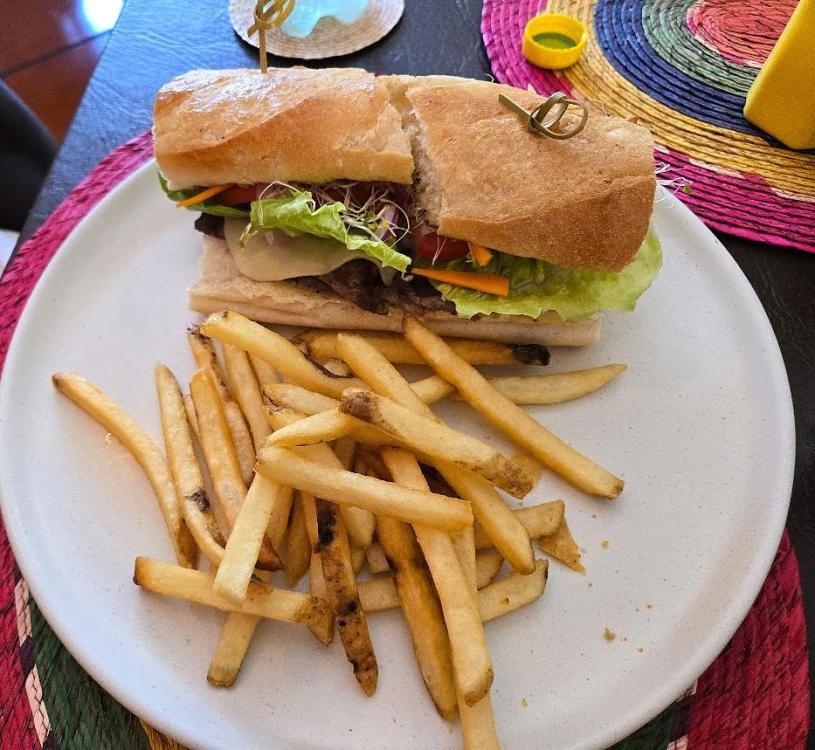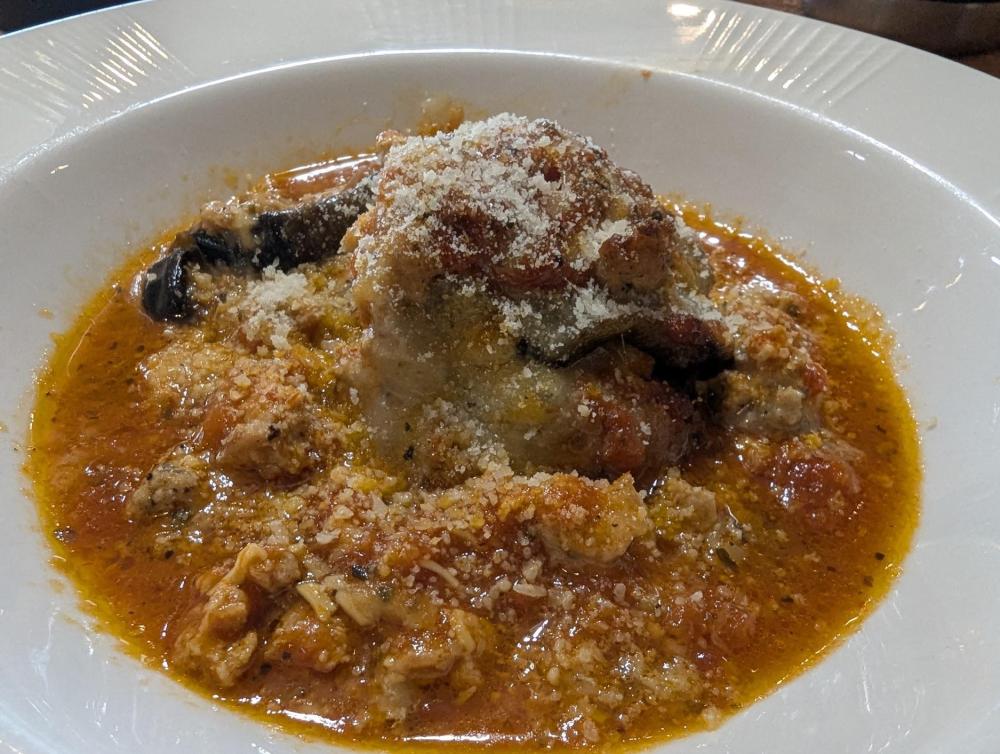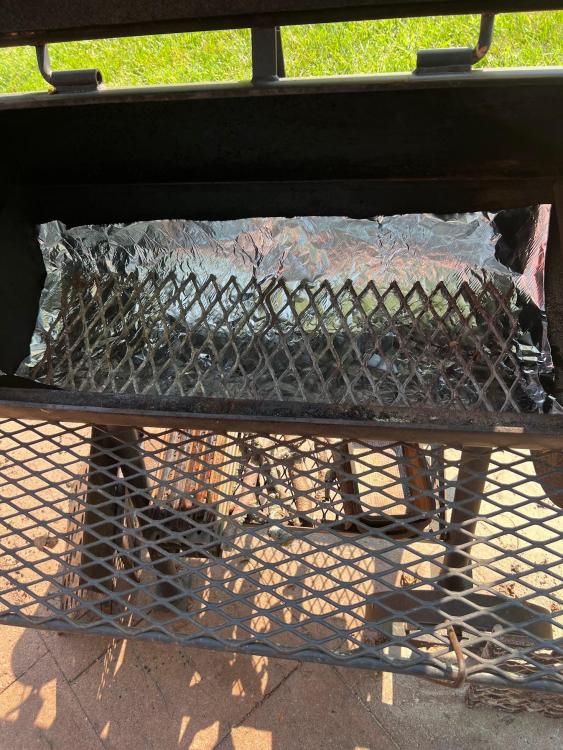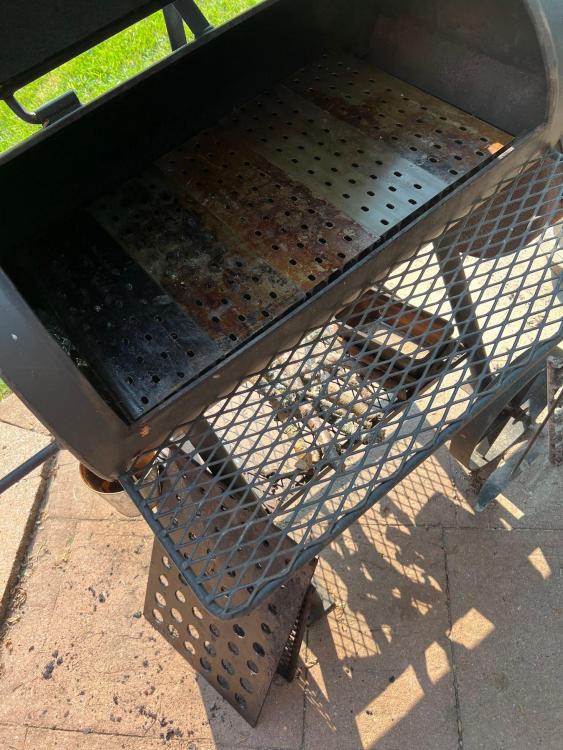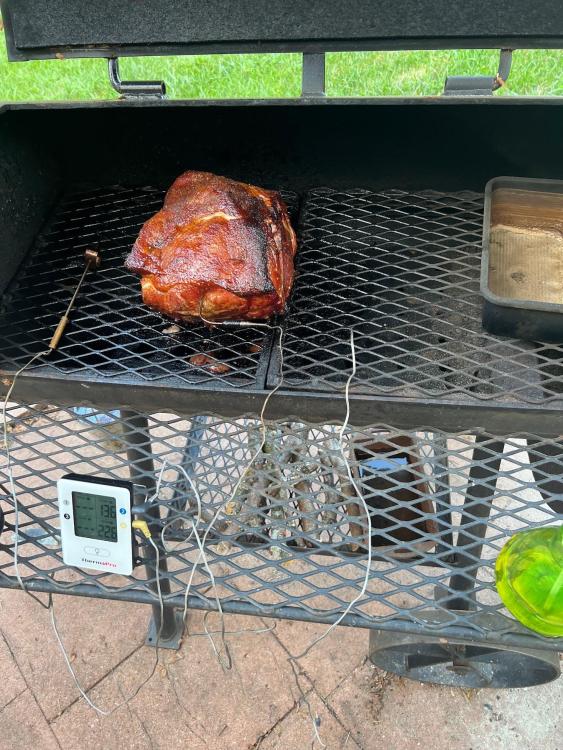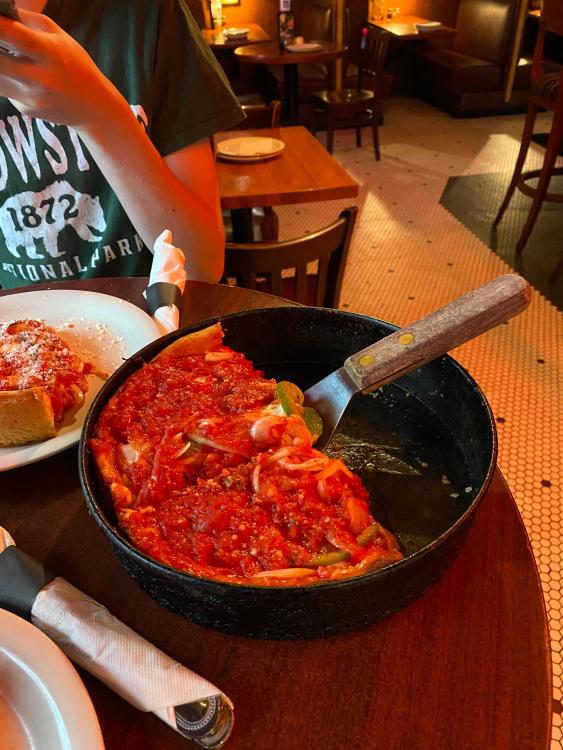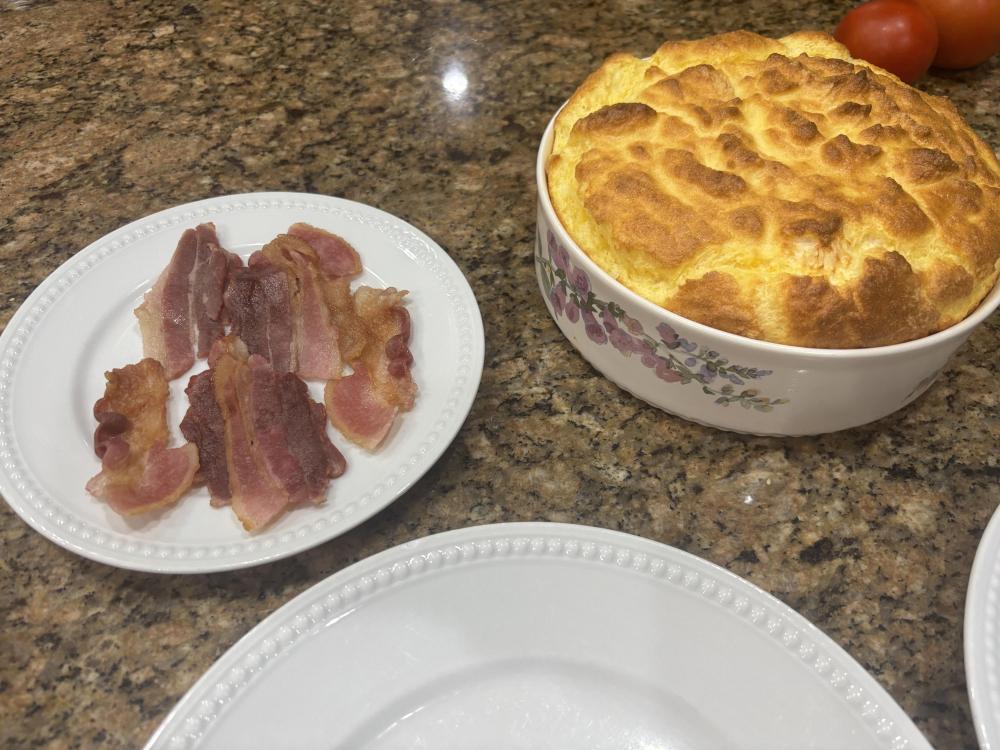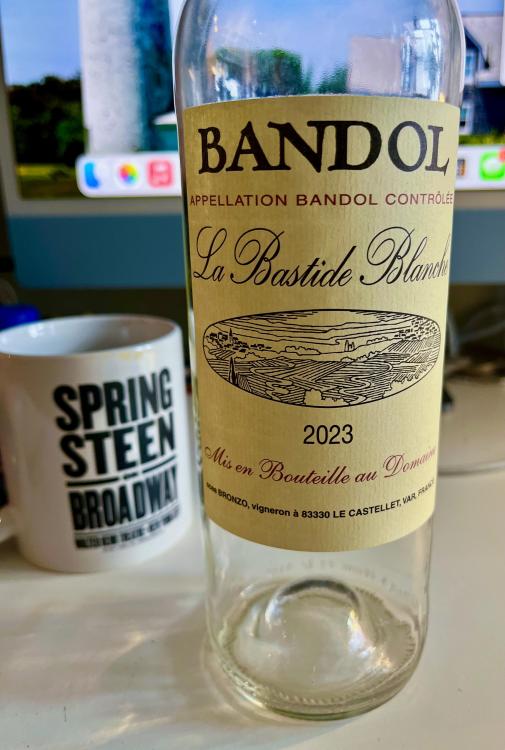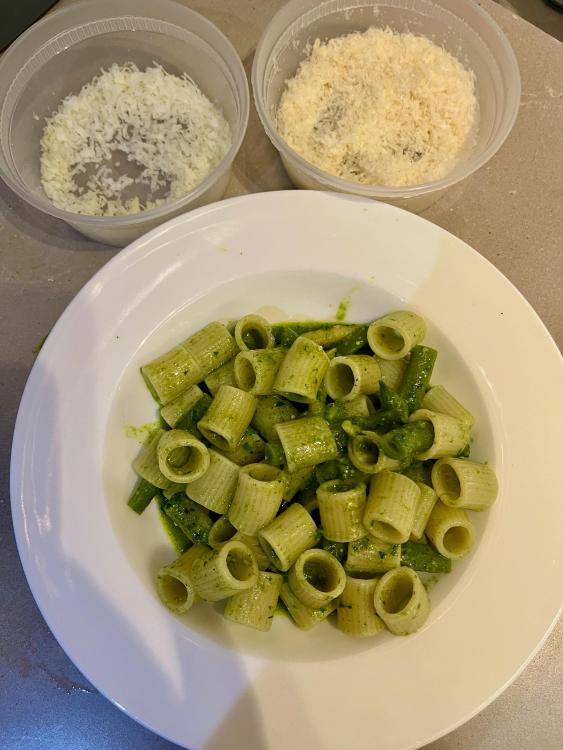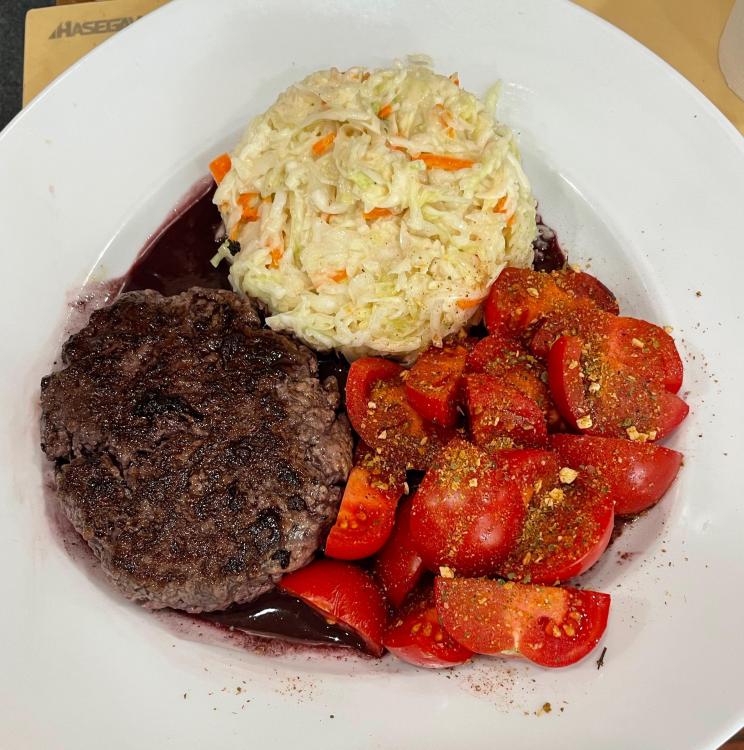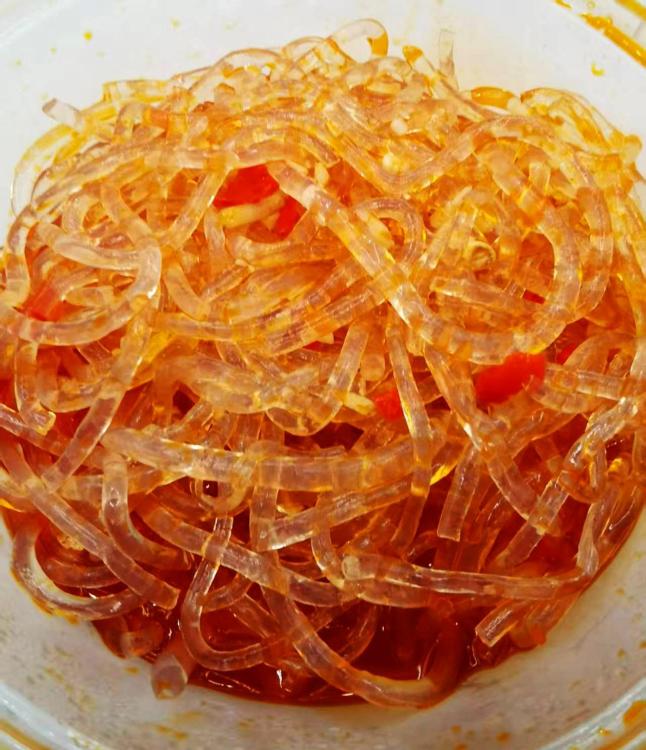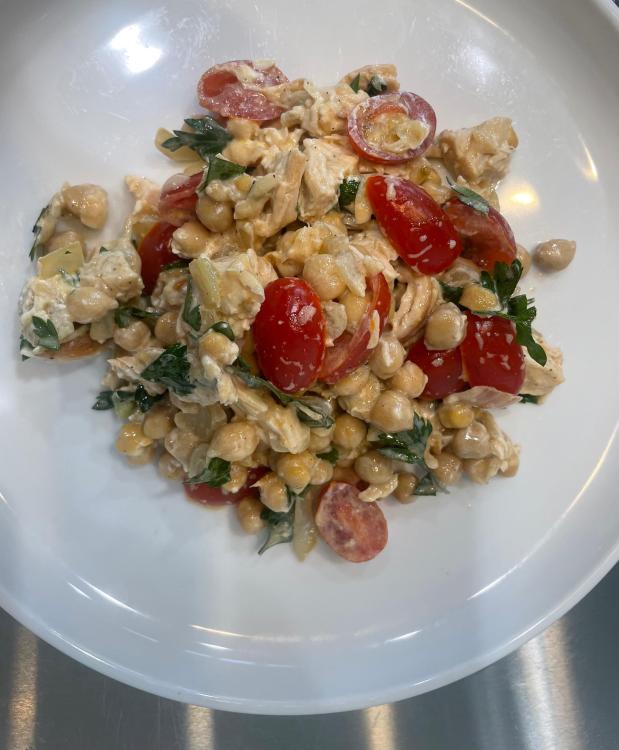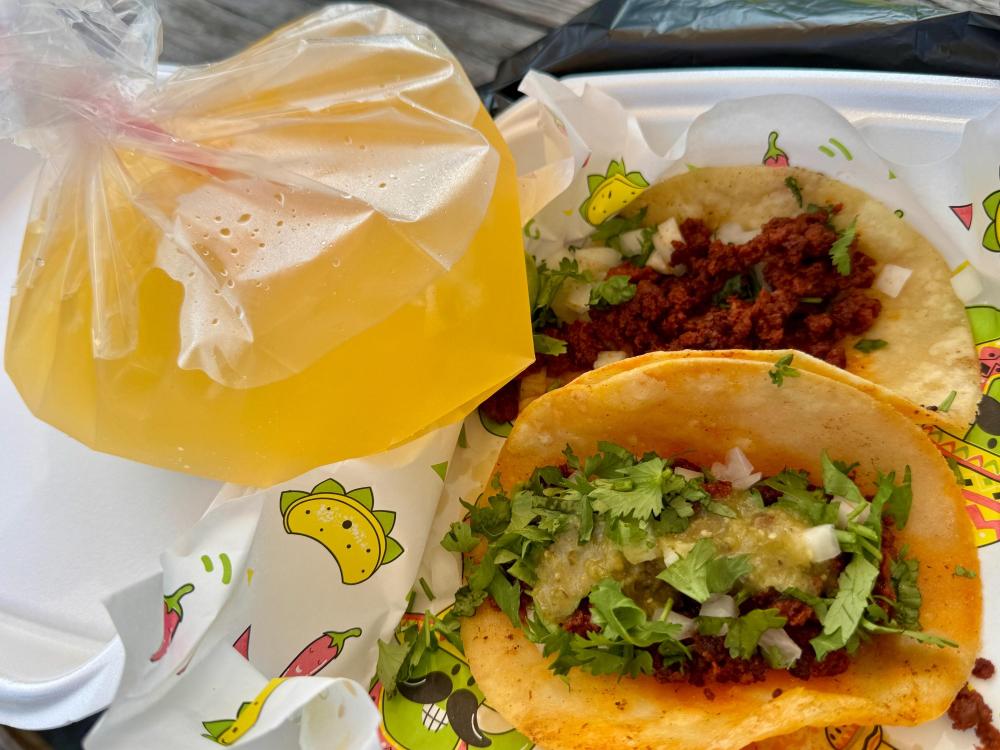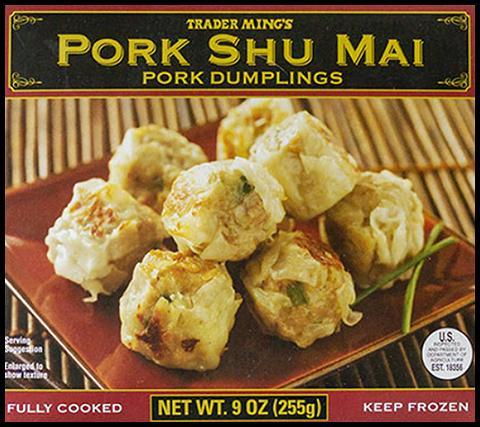-
Welcome to the eG Forums, a service of the eGullet Society for Culinary Arts & Letters. The Society is a 501(c)3 not-for-profit organization dedicated to the advancement of the culinary arts. These advertising-free forums are provided free of charge through donations from Society members. Anyone may read the forums, but to post you must create a free account.
All Activity
- Past hour
-
Great article, thanks for sharing. ❤️
- Today
-
For many years I have made my beer money by writing and translating for one of China's top wine trade publications. The editor-in-chief is an old friend. This is one such article of mine which appeared bi-lingually in their flagship magazine, several years ago. I have spared you the Chinese version. In Lombardy, Italy, in the town of Desenzano del Garda, on the banks of Lake Garda, Italy’s largest lake, it is a warm spring Sunday morning. The Gallo family are gathering together for lunch. Four generations will be present for the meal. A large table is set out in the garden and the noise of chopping, the banging of pans and the voice of Mama Gallo issuing instructions is emanating from the kitchen. Eventually all the family arrive and take their places around the table, which by now is covered with food. A short prayer of thanks is said and everyone begins to eat. This meal will last for hours. The excited talking and laughing dies down as the Gallo family start to eat, eagerly tasting every mouthful. Mama apologises for the plainness of the food and everyone assures her it is delicious, which it certainly is. After a while, people start to slow down, but continue to nibble and sip at their wine until, finally they begin to feel sleepy. All over Italy, many families are doing the same. Thousands of kilometres away, in a small town in central China, the Li family are gathering together for dinner. Four generations will be present for the meal. A large table is set out in the sitting room and the noise of chopping, the banging of pans and the voice of Mama Li issuing instructions is emanating from the kitchen. Eventually all the family arrive and take their places around the table, which by now is covered with food. A short welcome is said and everyone begins to eat. The excited talking and laughing dies down as the Li family start to eat, eagerly tasting every mouthful. Mama apologises for the plainness of the food and everyone assures her it is delicious, which it certainly is. After a while, people start to slow down, but continue to nibble and sip at their wine until, finally they begin to feel sleepy. All over China, many families are doing the same. Yes, despite the distance between the two countries, the descriptions of these meals are almost the same. Like no other European country, Italy holds food dear to its heart. They live to eat, not eat to live. Food and eating together is central to the culture. To not offer guests at least a snack or, better still, invite them to join the family meal is almost unthinkable – just as in China. But the similarities do not end there. Let’s look at what they are eating. On the Gallo family table are several dishes featuring pork such as a spicy pork stew called Lo Stufato Dell'Adriana, On the Li family table there may also be a spicy pork stew such as Chairman Mao’s favourite, 红烧肉 (hóng shāo ròu), Red-Braised Pork. The Gallo family will be enjoying several types of sausages and hams. Italy’s Parma ham is enjoyed all over Europe and the Americas. Chinese sausages are also world famous and Jinhua ham from China’s Zhejiang Province is enjoyed all over China and beyond. Both countries are known for using every part of the pig from the nose to the tail. Parts of the animal which are thrown away or used only to feed pets in some countries are loved by both Italians and the Chinese people. The Gallo family are also enjoying fresh carp which, earlier this morning, was still swimming in Lake Garda, the beautiful lake they can see as they eat. The Li family are enjoying fresh carp from their nearby river. Mama Li bought it, still live, in the market earlier in the day. On both tables is a wide selection of beautiful, freshly picked and carefully cooked vegetables and a wide variety of mushrooms is used in both countries. Of course on the Gallo family’s table, there will be pasta. And the Li family are also eating noodles. Who can imagine Italy without pasta – or China without noodles? Italians like to say that noodles were introduced to China by Marco Polo, while the Chinese people like to say that Marco Polo took them from China to Italy! Actually, neither story is true. There are certainly records of noodles being eaten in China and pasta being in Italy long before Polo was even born. The truth is noodles probably evolved separately in each place. A plate of ravioli lies on the Gallo family table while a plate of jiaozi is on the Li family table. The shapes and flavours are a little different, but they are essentially the same thing. Tortellini look so much like wontons that they are known in Chinese as “Italian Wontons”. And like wontons, they are often served in soup. Due to the pressures of modern life, the large, four hour long dinner which was once a daily event in Italy, is now usually confined to the weekends and holidays. Similarly, the Chinese large dinner is usually only held for special events and festivals. But the busy worker in Rome and the busy worker in Beijing may eat a remarkably similar lunch. In Rome, a quick bowl of tasty pasta al pomodoro (pasta in tomato sauce); in Beijing a quick bowl of tasty zhajiang mian. While China is the world’s top rice growing nation, Italy is top in Europe. Whereas in China rice is mainly grown in the south, in Italy it is the opposite. And while Chinese stir-fried rice is known the world over, Italy is also renowned for its classic rice dish; risotto. Italian food and Chinese food are the top two international cuisines. There are Chinese restaurants in almost every country of the world; just as there are Italian restaurants. Of course, not everything is similar. Ingredients and flavourings are sometimes very different. Italy relies heavily on dairy products such as cheese and cream in its cooking; something many Chinese people cannot accept. And, of course, there are many Chinese foods and tastes which would be unacceptable or unfamiliar to most Italians. Also, the wines and other drinks accompanying the meal will probably be somewhat different. The Gallo family will be drinking a locally produced wine, possibly a very local Bardolino or a Valpolicella from nearby Verona. Papa and the older men may finish the meal with a drop of Grappa, the strong liquor made from the skins, stems and seeds used in winemaking. The Li family will more probably celebrate with a rice or grain based wine, but red grape wines, both imported and domestically produced, are becoming more fashionable. And Papa Li would probably appreciate a small glass of that Grappa while Papa Gallo toasts him back with a glass of Baijiu! But overall, the Gallo and Li families could change places and be familiar with much of the food they find and perhaps surprised to find that the two cultures aren’t as different as they imagined. Gustoso!好吃!
- 1 reply
-
- 2
-

-
I learn something almost every day in these threads, I had no idea that vadouvan spicing was a thing.
-
Kofte with Vadouvan Cauliflower and Pomegranate Vinaigrette based on a recipe from essen & trinken - kofte are made with ground beef, onions, garlic, parsley, breadcrumbs, egg, paprika, cinnamon and cumin and pan-seared. Cauliflower is pan-seared and finished with vadouvan. The vinaigrette is a mix of olive oil, white wine vinegar, pomegranate molasses and pomegranate arils. Kofte and cauliflower were served over yoghurt (just with s&p) and topped with the vinaigrette and parsley
-
In the case of elk, the same way as you would use any ground red meat. It is lower in fat so may need some help in that department. @KennethT often cooks with elk, so you may want to look at some of his posts. In fact, in many cultures, lamb and goat are not differentiated, at all. Use it the same as ground lamb. Goat can be gamier but that depends largely on how it was raised. - often they are indistinguishable. Of course, both these proteins have dedicated topics already which you could have consulted.
- Yesterday
-
This afternoon I visited a market I've not been to in years. I went because I just discovered that they carried frozen or refrigerated coconut chunks which I plan to use with home made almond milk in both a drink and in a version of Haytaliyeh, a Lebanese milk pudding. While exploring the store, I made discoveries of various items I'd not seen elsewhere. A return trip when I have more time is in order to both explore more and purchase some of the intriguing and interesting items I found. Today I came across these items and purchased a package of each, thinking that the good folks here might have some thoughts about cooking and preparing them: I've eaten goat a few time when living in Mexico, but that was many years ago and it was prepared by someone else and it wasn't ground meat. Elk was enjoyed during a visit to Washinton state, also years ago, and also not ground. Any ideas on how these items can be enjoyed?
-
Visiting SIL was curious about the sorrel we have growing in a pot, so we made a sorrel overload meal. Arroz verde with sorrel, cilantro, roasted chile Poblano, fried onions and garlic, and chicken stock, finished with cubed/fried plantain. Mrs. C made ground beef with some sort of sorrel sauce. Quite tasty mixed together! We also had a sliced local tomato, which I missed in the cell phone pic. SIL said she wasn't very hungry but went back for seconds, and is now talking about growing sorrel when she returns home.
-
First full day back in Ajijic after 5+ weeks in AZ which included surgery that ended well with a good pathology report. Celebrated our return at a Hole In The Wall place within a 10 minute walk from home where we've enjoyed many MXN meals. I had enmoladas de pollo, chicken (no cheese or other stuff inside, just white meat chicken) stuffed into in-house corn tortillas, smothered in the best molé sauce outside of Oaxaca. So much chicken in it, I could only eat two, brought the 3rd one home for a future snack. Mi esposo had an arrachera baguette (marinated skirt steak) that was huge; he couldn't finish all the fries (took them home, too!).
-
Not only that, the shop I mostly order from delivers for free! My much more local shop (i.e. the one in our commercial strip) has some nice wines as well...https://www.vinvero.com/
-
Ah, I knew about the one store liquor or wine license rule and that TJ's had one wine shop in NY but didn’t realize it had closed. Luckily, you have many superior options close by!
-
Norm, your hosting skills are unmatched!
-
Sadly, that can't happen here. According to AI: No, Trader Joe's cannot sell wine in most of its New York locations. Due to New York state law, grocery stores in New York are generally limited to selling beer. Trader Joe's, like other chains, is restricted to only one location in the state where they can sell wine or liquor. This single location, which was previously the Union Square wine shop, is now closed. The Trader Joe's I shop at has a fairly extensive beer selection, and a few ciders as well.
-
-
@weinoo---found that Blanco in London/ not easily found in states. I drink more the Rose'
-
@JoNorvelleWalker Id say if you get ' skinless ' : dont air dry , you are drying the meat . season w your favorite's , but try a wet seasoning then IDS on a much higher heat : like CSO'ing , w smoke and heat pull for juicyness , rather than low and slow smoking. have not done that yet.
-
@JoNorvelleWalker not necessarily. it was an experiment . I know you get most of your groceries ' on line ' but consider looking into generic bacon , the full 1 lbs version that version has ' fat cap ' ends , which are trimmed off for the 12 0z versioons. you want those . then , if you can , de-salt the whole lbs , 24 hrs , very cold water to keep the fat firm , in the refig. changing the water once or twice . then use that ' pork belly ' to shield longer term IDS meats. tie them up . stretch the bacon ! something to think about. works vey well . does not need to be thick at all . or use chicken skin that comes w the ckicken // turkey .
-
Last month Charlie said he wanted to invite people over for his birthday. We had it last Saturday. He asked for Korean food mostly but would like it if I cooked something in the smoker too. I got , some thin sliced shoulder for pork bulgogi, some thin sliced ribeye for beef bulgogi and marinated them for three days. I got a 4 or 5 pound shoulder roast for pulled pork. I told Charlie that I was going to smoke a shoulder roast because I thought people were getting a little tired of ribs. He said the only person tired of your ribs is you, everybody else will want you to make some, so I got a couple slabs or loin back ribs and smoked them as well. I didn't take very many pictures. I did take a picture of the pork roast and a couple pictures of how I converted the smoker for a large grilling area. I have grill grates that fit the smoker. They are ridged on one side and smooth on the other side. I've had them since before there were Blackstone grills. I use them when I need a large flat grilling surface. They were expensive. I probably could have bought a Blackstone for about what they cost. Anyway, sorry I didn't take many pictures. We had, besides the meats, two kinds of kimchi, rice, vinegar based coleslaw, BBQ beans, and hamburger buns so people who wanted, could make sandwiches with the pulled pork.
-
Do you think six hours is necessary?
-
@JoNorvelleWalker Thinking about this : the legs I used were mostly covered by skin. that skin was inedible , but MC found it , sliced up , quite tasty. the exposed meat's surface , did have a bit of a chew to it , and some of that got trimmed for MC . so , try it again w a thigh w skin. and if you get that extra skin flap , tie it around the any thigh thats exposed. that might work.
-
I wonder why our results were so different?
-
@JoNorvelleWalker that's a shame. you might iPot them for stock ? adding the tough spare ribs ?
-
These thighs were skinless -- not what I ordered. Sometimes Whole Foods is like that. Now for the sad part: the thighs were removed from smoke after exactly six hours. They were dry, hard, and practically indistinguishable from my most recent sparerib disaster. They hurt my teeth. Nothing like your drumstick pictures. The Penzeys spice rubs were nice though.
-
Trader Joe's had a nice private label Bandol rosé earlier this summer @12.99. I polished off my last bottle over the weekend. Unfortunately, I think it’s sold out now but it’s worth trying if you happen to spot any.
-
Nor would I.
-
I've mentioned that we have largely gone away from using our grow-out cages on the lawn for our adolescent bunnies, because we'd had a problem with the coccidia parasite (adults survive it handily, but it's dangerous for the growing youngsters). We've modified one of the cages so it stays up off the ground, and have used it for our current litter of half-grown kits via Hazel (the "princesses" and their brothers were a slightly older litter from Hilda, and they mostly were sold as pets). This cage isn't made of all wire, like the ones I've built. My father-in-law constructed it with a wooden frame and chicken wire on all six sides. It's a good piece of equipment, though I plan to modify it this off-season to make it more practical. A little while ago, just after I returned from NS, a few of the bunnies were sorely tempted by the fresh clover growing just out of their reach, and pushed hard enough on the wire in their attempts at snacking that the wire (now rusted in a couple of places) gave way. We retrieved all but one escapee, and there was enough slack in the wire that I was able to re-staple it to the frame using a less-rusted area. Well, this morning when I went to feed them, I found that they'd repeated their efforts and there were no fewer than four of the little guys happily roaming the lawn and, in one case, patrolling the space between my garden beds (but not, thankfully, eating the garden itself). Now, I've mentioned in the past that handling our bunnies frequently has many benefits, up to and including the day of our final, fatal betrayal of their trust. This morning provided a really vigorous endorsement of that strategy, because when the little ones saw me coming with my bucket of water they all hopped happily right to my feet, and waited to be picked up and cuddled. I don't need to tell you, this scenario was vastly superior to chasing the little critters around with a net or some such. It came close on the heels of an endorsement from the lady in Nova Scotia who'd bought four of the "princesses" from me at the end of June. They were for her and a friend, and they're utterly in love. She's bought rabbits from other growers down in NS before, and ended up rehoming them, because they simply weren't human-friendly enough to fit in as pets. That was not at all an issue with ours, of course. She says she'll be buying from us exclusively in future, for herself and her friends, because ours are so sweet-natured. So that was nice. As I mentioned upthread I'm keeping a spreadsheet this year, to monitor our expenditures and income re the critters and the garden. It's a work in progress, and I keep tweaking it as I go, so that it reflects our income and expenses with some reasonable degree of accuracy. At present we're sitting at a modest -$470-odd year to date, with sales keeping us reasonably close to the break-even point. That's not entirely accurate, because the running total still includes what I've spent on my garden, and I want to split that off from the amounts involved in the rabbits and poultry. With the critters, I want to get a handle on how our expenses and sales balance each other out, without taking into account the "deemed market value" of the meat itself. It's all well and good to know that a frozen rabbit sells for +/- $10/lb, but I want to know what our actual costs are when year-end rolls around. At that point I'll have a cumulative total of our meat harvest for the year, give or take a few quail. Once I know how many pounds of rabbit and chicken we put in the freezer, and how many quail, I can do subtotals of my cost for each critter and work out what our actual cost was per pound of meat. We'll also look at the approximate market value for those same pounds of meat, and as long as they're close we'll call it a win (because of course ours will be higher-quality than what we'd usually get at the store). That "deemed value" reckoning will also apply to the eggs we get from the quail and hens, with supermarket cost running around $5/doz (I think) right now. Our actual cost for the eggs will be hard to figure, but I'll probably work it backward from the percentage of our flock that will become year-round tenants (a dozen or so, plus five or six silkies that are just pets) vs the number we're growing out for the freezer (40-ish). I'll know what our total costs are for the birds, and just declare that percentage of it to be our cost for eggs. With the garden harvest it's another whole story, of course, because we don't sell any of that as we do with the rabbits, birds, and eggs. In that instance I'm just recording our harvests as I make them (ie, 700g of green beans yesterday), and I'll work out a "deemed value" from the supermarket pricing. We should come out to a reasonably favorable position, because I focus less on commodity things like carrots/potatoes and more on those items that cost us more at the supermarket. Bunches of chard or kale, for example, typically run $3.99 for most of the year, so it doesn't take long for a freezer full of greens to add up to a lot of saved money. If our costs are outrunning our sales by >$500 at this point, I'm pretty happy with that. We'll have 40-odd chickens in the freezer at 3-4 pounds each, so that's 120-150 pounds. Current price in my neck of the woods is about $6.99/lb IIRC for chicken (when not on sale), and higher for boneless, skinless breasts, so we're easily looking at upwards of $700 in value there (not counting the premium one would ordinarily pay for locally-raised, not water-chilled, etc etc). Add in the dollar value of a couple of hundred pounds of rabbit at $10/lb, and the quail at... whatever figure I decide on, per quail... and we're probably coming out well ahead by year-end. One final note, which will amuse some of you. When we had our early-season litters my GF carefully picked and segregated a number of breeding trios, consisting of one buck and two unrelated does, which we offered up for sale to anyone wanting to raise their own rabbits. If we sold them all we'd do it again, and if not, well, we'd call that trio our next-generation set of breeders. We did, in fact, end up with one trio left over, consisting of a black doe, a brown doe, and a white buck. As I've mentioned, my GF tries to keep the names coherent within a given generation, and we're currently on names starting with H. So when I walked into the room, one day recently, she was contemplating H names for the buck. "Hector? Horace? Harvey?..." and she was startled when I burst out loudly "Harvey! Yes, perfect! The white buck *has* to be Harvey!" She was mystified, until I sent her this link. https://www.imdb.com/title/tt0042546/
-
Who's Online 3 Members, 0 Anonymous, 289 Guests (See full list)
-
Popular Now
-
Recent Forum Images




